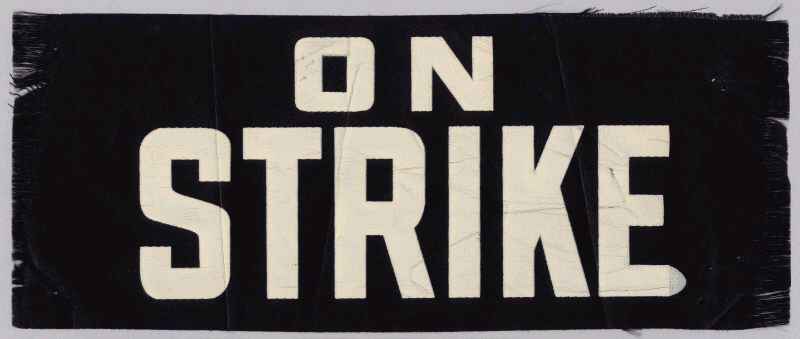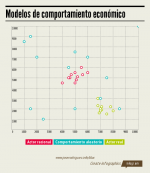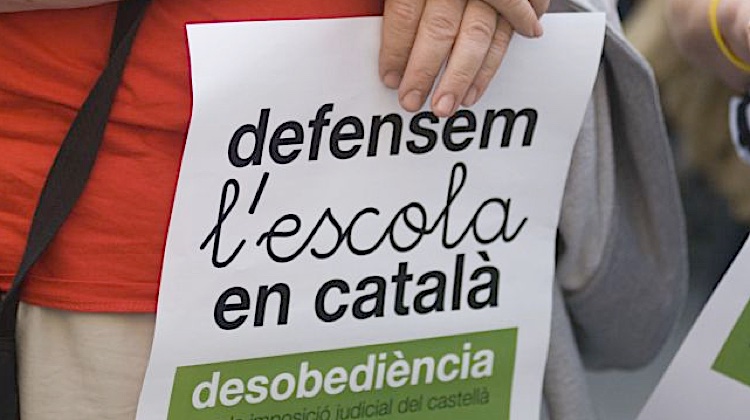Presentación: Trabajo realizado para el curso de la Universidad de Duke (Coursera) de introducción a Economía conductual (Behavorial economy). Este trabajo intenta analizar en un formato “paper introductorio” un problema que se ha observado en ciertos conflictos laborales, donde, a pesar de que existe una solución intermedia entre empresarios y trabajadores, los actores se ven forzados a escenificar el conflicto con los costes que esto conlleva. Efectos como el “miedo a la pérdida” y el “fairness” que hace que no se acepten (tanto por el empresarios como por los trabajadores) reducciones de salarios, lleva a que la solución basada en despidos y no en reducciones generalizadas de sueldo y beneficios en la compañía, sea la primera opción y solo un conflicto o una larga negociación permita presentar las alternativas racionales como más aceptables. Todo esto tiene costes entre los trabajadores (pierden días de sueldo, un conflicto prolongado genera tensiones) y empresarios, posiblemente utilizar el mismo “miedo a la pérdida” comparando la posible pérdida de salarios y beneficios con la pérdida del trabajo o el clima de trabajo, o el efecto Ikea en el que se implique la plantilla, representantes sindicales en la empresa y el empresario en la construcción de medidas alternativas mediante la mediación de un arbitraje, permita facilitar los acuerdos.
1. Introduction.
One of the observed effects in several labour disputes, especially in companies with economical problems which must cut salary expenses or fire employees, is the effect “bread and roses” (in honor to Ken Loach’s film).This effect consists in the need to drive the conflict to the protest or strike stage in order to force a compromise, even though with the numbers in hand the best agreement possible (the Pareto efficiency) is known beforehand.
On one hand the employees must overcome their “loss-aversion”, proving that they have done everything possible to prevent losses (the realization of a strike is a good example of ‘guys, we have tried it, but we must cut our salary or the boss would fire someone‘); and the union leaders that must have proved their hard work, even when this hard work becomes an objective money loss (the cost of a day of strike) so that the employees trust their union leaders have done everything possible in their role of workers’ representatives. Also, employers must overcome their resistance to their “fairness” perception and to drop their original plans and the threat or reality of a strike helps their change of opinion, most employers find easier to fire some of their employees rather than lower their salary (Ernst Fehr, Reciprocity and economics: The economic implications ofHomo Reciprocans, European Economic Review 1998).
Several observed experiences in labour disputes in spanish struggling businesses (Consejo Económico y Social. España. 2012, Memoria sobre la situación socioeconómica y laboral de España 2011) show that agreements on salary cuts or labour condition (those that avoid firings) aren’t met before a strike or several demonstrations occur, even in those cases when an agreement has been brought on the table. Usually the conflict lasts a few weeks and is limited to a strike threat or one to two strike days that forces the parties to negotiate.
This behaviour brings some problems, because one of the beneficial effects of the collective bargaining (very extended in the spanish labour market), is to reduce the labour conflictivity, and the company with economical problems and their workers are in urge to avoid any damage that an strike could produce. This is an irrational behaviour because if you have in the hand an option to avoid the labour conflict and avoid firing workers and save the company, is irrational to get an strike to convince everybody to adopt this solution.
2. Outline the existing research
The behaviour of employees and union leaders resisting an agreement that avoids firings in exchange of salary cuts or worse labour conditions in the context of “loss-aversion” is described in (Trithch, Helping People to Help Themselves, NYT 2007), in (Airely&Huber, When Do Losses Loom Gains? , Journal of Marketing Research 2005), and in (Video Lecture 2.6, 1:00)
The weight of social customs, the rigidity of salaries and the reciprocity and fairness in labour relationships which explains a great share in union leaders’ need to show their colleagues that they’re doing everything possible is akin to the example in (Video Lecture 2.6: 00:05), and the employers’ greater aversion to salary cuts than to firings can be found in (Fehr, European Economic Review 1998).
3. Possible solution
The solution I propose can help unions representatives to explain the problem to their colleagues. Opposite the salary or labour conditions “loss-aversion” there exists a greater “loss-aversion”, the fear to lose the job if an agreement doesn’t come up. The situation goes from “loss” to “big loss”. This solution has proved useful in some conflicts. In companies where firings are uncommon (state-owned companies) this solution is less effective.
On the other hand we can use the “IKEA effect” (Norton, M. I., Mochon, D., & Ariely, D., 2012) so that employer and employees feel that the agreement they achieved is good, establishing arbitration mechanisms to force agreements where participation is not only open to unions and employers but also employees. The mere fact of collaborating in the creation of an agreement its acceptance will be easier. This strategy has also been used by unions when they hold continuous meetings with employees while the negotiations go along, making the employees to involve themselves in the different phases of the accords and easing afterwards the acceptance of these measures.








